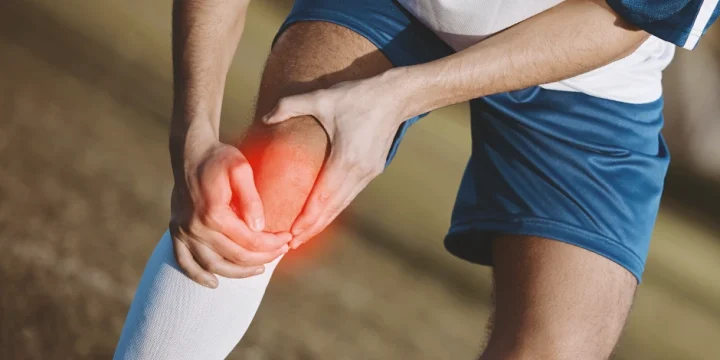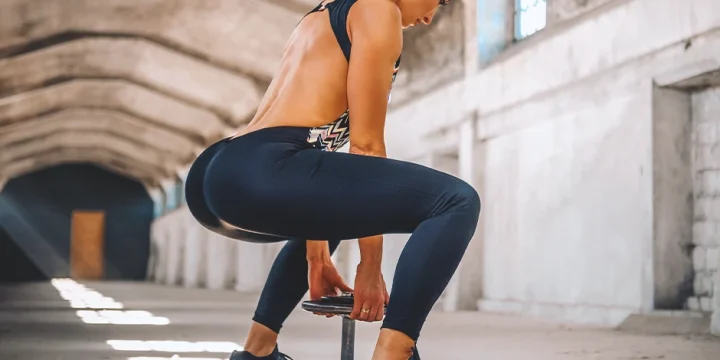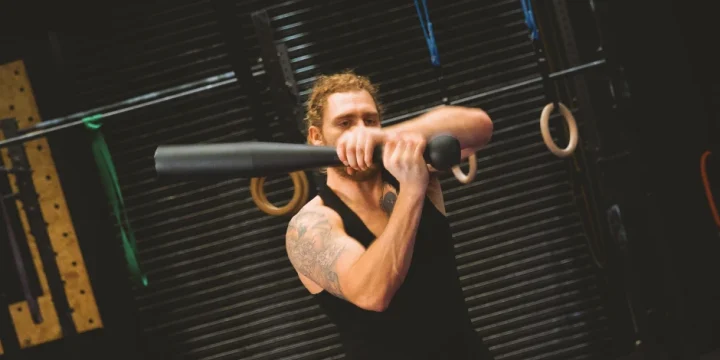As a personal trainer and strength coach, I often encounter people struggling with hip pain during their training sessions. And in many cases, it all comes down to a lack of mobility in the hip joints.
So, I got together with a physical therapist who helped me put together a list of stretching exercises specifically targeting hip pain and mobility.
I then tested these out with several clients to see how they helped them with overall exercise performance.
Let's explore what I found.
Quick Summary
- If you regularly deal with hip pain, then it could be due to a lack of hip mobility and stiff muscles that you can improve with stretches like the pigeon pose and leg swings.
- Some people resort to hip pain exercises, but in many cases, it’s more important to stretch the hip flexors and other muscles first.
- According to a study from the Journal of Orthopaedic Surgery and Research, incorporating omega-3 fatty acids into your diet may help alleviate hip pain.
- We recommend taking an amino acid supplement to aid your hip mobility routine to help with overall recovery from workouts and injuries.
Best Stretches For Hip Pain

Having struggled with and overcome tight hips, I understand the difficulty of hip immobility.
That said, here are eight highly effective hip openers to help you achieve strong and mobile hips.
1. Kneeling Hip Flexor Stretch
In my early days of training, this stretch helped me unlock greater flexibility and relieve tension in my hip flexor muscles.
Here’s how this stretch works:
- Get into a kneeling position on your yoga mat and place your left foot flat on the mat in front of you.
- With your left knee bent at a right angle, place your hands on your hips.
- Now rotate and tilt your hips forward until you feel some strain on the tight hip flexors in your right leg.
- Hold the position for a few seconds, and then release your hips back.
- Repeat this movement for about 30–40 seconds.
Read More: Lying Hip Flexor Stretches
2. Knee-to-chest Stretch
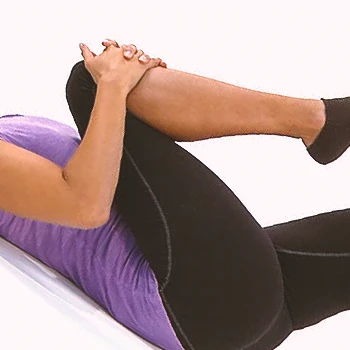
This is a great static stretch for your hip muscles, and it’s also one of the easiest ones to do regularly.
I still do this stretch every morning and night, and it's been a game-changer.
Here's how you do it:
- Lie down on a yoga mat with your body completely straight and arms beside you.
- Raise your left knee off the ground and bend it completely while the other leg remains on the mat.
- Use your hands to pull the knees towards your upper body and chest.
- Hold the stretch for 30 seconds and then switch to the other side.
3. Seated Butterfly Stretch
This is a simple stretch that opens up the hip joints. You can add this to your bedtime and morning routine.
Here's how you do it:
- Sit on the mat with both feet flat on the ground and your knees bent.
- Slowly lower your knees to each side and use your arms to push them down as far as possible.
- Hold the stretch for 30 seconds, and then release it.
- This is one of those stretches for hip pain where you’ll gradually see progress by being able to get your knees close to the ground.
Learn More: Seated Soleus Stretches to Overcome Tight Lower Legs
4. Pigeon Pose
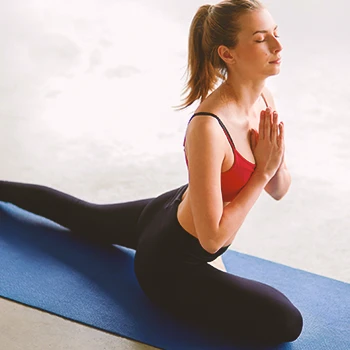
I remember doing these in a beginner yoga class when I first took my mobility work seriously. This stretch is great for working the thigh and glute muscles.
Here's how you do it:
- Get into a high plank position with your hands below your shoulders and both legs straight.
- Bring your right knee up under your body so that your right foot is just below the left side of your hip.
- Keep the left leg straight and slowly lower your pelvis down to start the stretch and relieve the hip pain.
5. Figure Four Stretch
This is another great way to stretch the gluteal muscles and hip flexor muscles at the same time.
To do this stretch:
- Lay down flat on your back with both knees bent.
- Place your right ankle on your knee on the opposite leg.
- Reach your hands behind your left thigh and straighten out the left leg.
- Pull the leg towards you and feel the stretch in your right hip.
- Repeat for the other side.
6. Leg Swings
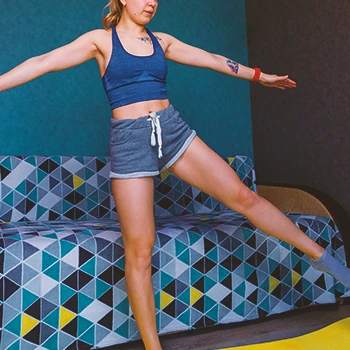
I’d now like to show you a dynamic hip stretch that you can do pretty much anywhere: leg swings.
To do them:
- Stand with feet hip-width apart and hold onto a stable support (e.g., a wall or railing) for balance.
- Swing one leg forward and backward in a controlled motion.
- Keep your leg straight but not locked, and maintain good posture.
- Perform the swings for the desired number of repetitions on one leg.
- Then, switch to the other leg and repeat the swings.
- You can gradually increase the range of motion as you warm up and gain flexibility.
7. Yoga Squat
What's great about the yoga squat is that it's a simple stretch for hip pain. I usually do it whenever I feel a bit of tightness in my hips.
Here's how you do this movement with good form:
- Stand in a squat position with your feet about shoulder-width apart.
- Slowly lower your buttocks down and keep your upper body straight.
- Your knees will naturally flare out, and you should even try to push them out further.
- With your knees fully bent, hold the position for 10 seconds and repeat the movement a few times.
8. Lying Hip Rotation
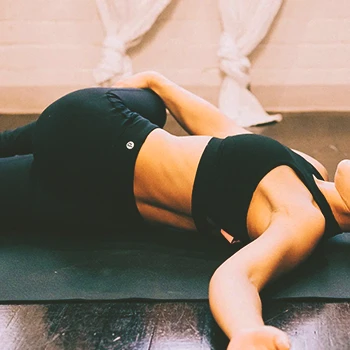
I highly recommend the lying hip rotation if you experience hip pain and struggle with some of the above stretches.
Here's how you do this stretch:
- Start by lying flat on your back.
- Bend your knees with feet flat on the ground, hip-width apart.
- Slowly rotate your bent knees to one side, keeping your upper body still.
- Hold this position for 15–30 seconds, breathing deeply.
- Return your knees to the center and then repeat the rotation on the other side.
- Alternate sides for desired repetitions or as recommended by your routine.
“Everyone can benefit from hip conditioning, even if you don’t have any hip concerns. Stretching and strengthening these muscles can help build stability and flexibility.”
- Gregory Minnis, DPT
Role of Nutrition in Managing Hip Pain
The food we eat plays a crucial role in maintaining the health of our joints, including the hips. A diet rich in anti-inflammatory foods can help reduce inflammation and pain in the hip area.
Make sure you have enough of the following in your diet:
- Omega-3 fatty acids: Foods like salmon, flaxseeds, and walnuts are high in omega-3 fatty acids, known for their anti-inflammatory properties. According to a study from the Journal of Orthopaedic Surgery and Research, incorporating these into your diet may help alleviate hip pain [1].
- Calcium and vitamin D: Essential for bone health, calcium and vitamin D can be found in dairy products, fortified foods, and sunlight exposure. They help in strengthening the bones around the hip joint, reducing the risk of pain due to osteoporosis.
- Fruits and vegetables: Rich in antioxidants, fruits and vegetables, like berries, leafy greens, and carrots, can help reduce inflammation and promote joint health [2].
Impact of Footwear on Hip Pain
I’ve learned that the shoes you wear can significantly impact your hip health. Proper footwear can provide the necessary support to your feet, which in turn can align your hips and reduce pain.
Here are some options:
- Orthopedic shoes: These are designed to provide extra support and cushioning. They can help in evenly distributing weight and reducing the stress on your hips.
- Insoles and arch support: Custom insoles or over-the-counter arch supports can be beneficial for those with flat feet or high arches, conditions that can indirectly lead to hip pain.
- Avoiding high heels: High heels can tilt your body forward, putting extra pressure on your hips. Opting for shoes with a lower heel can help maintain better alignment and reduce hip pain.
Mind-body Techniques for Hip Pain Relief
Techniques that focus on the mind-body connection can be surprisingly effective in managing hip pain.
Some of these include:
- Meditation and deep breathing: These practices may help reduce overall stress levels in the body. Lower stress can lead to reduced inflammation and pain.
- Yoga: Certain yoga poses are excellent for stretching and strengthening the hip muscles, improving flexibility, and reducing pain. However, it's important to choose poses that are gentle on the hips and to practice under guidance.
- Tai Chi: This gentle martial art focuses on slow, deliberate movements and can improve balance, flexibility, and strength, all of which are beneficial for hip health.
FAQs
Should You Stretch Your Hip If It Hurts?
Yes, you should gently stretch your muscles if your hip hurts, unless you have a significant underlying health issue or injury. People with arthritis or ligament injuries should talk to a doctor or physiotherapist before doing any stretching.
Does Stretching Help Hip Inflammation?
Yes, stretching can help with hip inflammation, as long as it’s not due to a significant injury. In many cases, inflammation can add pressure to the joint, tendons, and ligaments, and gently stretching the area could relieve the pain.
References:
- https://josr-online.biomedcentral.com/articles/10.1186/s13018-023-03855-w
- https://www.ncbi.nlm.nih.gov/pmc/articles/PMC5075620
About The Author
You May Also Like
